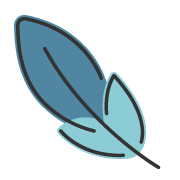Why do some materials conduct electricity?
2024-11-20
Once upon a time, in a land made of sparkly, colorful blocks, lived a little spark named Zip. Zip wasn’t just any spark; he was a super-duper energetic spark, always buzzing with excitement and ready for an adventure! He lived in a big, bustling city made entirely of these amazing blocks. Some blocks were bright red, some were sunshine yellow, and others were a deep, mysterious blue.
Zip loved to zoom around the city, but he could only travel on certain blocks. He’d try to zip across a bright red block, and whoosh! he’d travel at lightning speed! But when he tried to cross a blue block, he'd just sort of…fizzle. He couldn't understand why!
One day, feeling rather frustrated, Zip bumped into Professor Sparkle, a wise old block who knew everything about the city. Professor Sparkle was a beautiful, clear block, shimmering with inner light.
"Oh, dear Zip," chuckled Professor Sparkle, "you seem a bit…sparky!"
Zip explained his problem, his little voice filled with worry. "I can zoom across some blocks, but not others! It's so unfair!"
Professor Sparkle smiled kindly. "It's not unfair, Zip. It's all about the tiny little helpers inside the blocks, called electrons!"
Zip tilted his head, his tiny spark eyes wide with curiosity. "Electrons? What are those?"
Professor Sparkle explained, "Imagine the blocks are like giant playgrounds, and the electrons are tiny children who love to run and play. In some blocks, like those bright red ones, the playground is wide open! The children, the electrons, can easily run from one end to the other, holding hands and forming a long line. When I, Professor Sparkle, send a signal – like a shout – the electrons quickly pass the message along the line. That’s electricity! They’re like a super-fast messaging system!"
Zip's spark flickered with understanding. "So, the electrons are like messengers?"
"Exactly!" Professor Sparkle beamed. "Blocks that allow electrons to move freely are called conductors. They're like super-fast highways for electricity. The red blocks, many metal blocks, even the shiny silver ones – they’re all great conductors!"
Professor Sparkle then pointed to a blue block. "Now, look at this blue block. See how tightly packed the playground is? The children, the electrons, can't run around easily. They’re stuck! They can’t easily pass the message along, so electricity can’t flow. We call these blocks insulators. They’re like walls that stop the electricity."
Zip nodded, his little spark beginning to glow with newfound knowledge. "So, conductors are like open playgrounds, and insulators are like…walls?"
"Precisely!" Professor Sparkle chuckled. "Think of it this way: If you try to run across a wide-open field, it’s easy, right? That’s like a conductor. But if you try to run through a thick forest with lots of trees blocking your way, it’s much harder. That’s like an insulator!"
Professor Sparkle then showed Zip several different blocks. They tested a shiny, silver block – a great conductor – and Zip zipped across it like a rocket! Then they tested a block made of soft, fluffy material – an insulator – and Zip fizzled, unable to move. They even tested a block made of a special material, somewhere in between, which allowed some electricity to flow, but not as easily as the conductors.
"The ability of a material to conduct electricity depends on how easily the electrons can move inside it," Professor Sparkle explained patiently. "Some materials, like metals, have electrons that are loosely held and can move freely. Others, like wood or plastic, hold their electrons tightly, making it hard for them to move."
Zip spent the rest of the day exploring the city, carefully noting which blocks were conductors and which were insulators. He learned that even some liquids, like water with salt dissolved in it, could be good conductors! He discovered that electricity helps power many things in the city, from the bright lights to the amazing zooming trains.
As the sun set, casting a warm glow on the colorful block city, Zip thanked Professor Sparkle for his lesson. He now understood why he could zip across some blocks but not others. He realized that the tiny, energetic electrons were the key to it all! And from that day on, Zip zoomed around the city with a newfound appreciation for the amazing world of electricity and the tiny helpers, the electrons, that made it all possible. He even started drawing pictures of conductors and insulators, happily sharing his new knowledge with all his spark friends.
